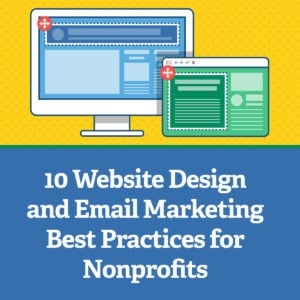
The rapid rise of social media and mobile technology has had a profound impact on website design and email marketing, yet many nonprofits have not yet adapted to the new aesthetics and functionality of a mobile, social Internet.
Based upon the knowledge and experience that the nonprofit sector has gained over the last 20 years of using websites and email for storytelling and fundraising, the webinar content below was presented August 23, 2016 to 1,662 nonprofit staff. It was the final presentation of the website design and email marketing webinar. To register for future free webinars, please see theNonprofit Tech for Good Webinar Schedule.
1. 43% of the adult global population owns a smartphone and the number of smartphone owners is expected to grow to 6.1 billion by 2020.
2. There are currently 4.4 billion email accounts worldwide and the number is expected to grow to 5.6 billion by 2019 – a growth rate of 26%.
3. 55% of email opens are now mobile.
4. Email fundraising raises 27% of online revenue and in 2015 email fundraising was up 25%.
5. Email is not dead, in fact, it’s growing in popularity and power with all age groups.
1. For your website and blog to be compatible with desktops, laptops, smartphones, smart TVs, etc., your NGO must mobile-optimize your content. WordPress.org is a content management system for websites and blogs. There are hundreds of responsively designed, low cost WordPress.org templates for NGOs and freelancers available for hire.
2. Prioritize images over text and provide ample white space: pbs.org (on January 5, 2015)
3. Use a large font size for title and body content: npca.org
4. Provide simple navigation and allow long scrolling: worldwildlife.org
5. Prominently feature your “Donate” button, social network icons, and e-newsletter opt-in:themarshallproject.org
6. Use large tappable buttons for calls-to-action: water.org
7. Maximize your website and blog’s right bar: aspca.org
8. Host your blog/stories* inside your website: audubon.org
9. Use the Facebook Comments Plugin or Disqus for blog comments.
10. Ensure that your website and blog is shareable: oceana.org
1. Never send email newsletters BCC or as a PDF attachment. Your NGO must invest in anemail marketing service.
2. Embrace a mobile-first email strategy. Mobile-optimize your email (UNICEF on desktop,UNICEF on smartphone) by using a responsive template.
3. Design templates that allow header images to be easily changed.
4. Integrate social media into your templates by featuring social network icons (and a “Donate” button) into your templates and by adding the ability for subscribers to share stories, pin products, like your Instagram photos, etc.
5. Focus on 1-5 stories and/or calls-to action and keep text to a minimum.
6. Prioritize image and video content.
7. Write short subject lines (50 characters or less) and use emojis to maximize open rates.
8. Send e-newsletters twice per month and donation appeals an average of once per month with increased frequency in December.
9. Study the email marketing of large NGOs similar to yours in mission and programs by making an online donation and/or signing up for their e-newsletter.
10. Prioritize growing your email list in 2016 and 2017.

Read the full article at:NPTechForGood.com
Tapp Network is a marketing & technology firm serving nonprofits and organizations seeking to accelerate their social impact, capacity building, and revenue growth for good.